Strong demand growth in the domestic market, steel producers are set to hike product prices by 1,000 a ton from March 1.

This will be the third rise in prices since February 1, 2019. “There is a growing demand for steel across sectors, and so all large producers are going ahead with a yet another price hike,” said an industry source in the knowledge of the development.
Domestic primary steel producers had upped prices of the commodity by 750 per ton from February 1, 2018. This had been the first hike in domestic steel prices since October, 2018.
“Domestic steel prices were in the range of 42,000-44,000 per ton depending upon various products. The hike in prices across products is about 750 per ton,” industry sources had said a month ago. Tata Steel, Sajjan Jindal-led JSW Steel, state-owned Steel Authority of India (SAIL), Naveen Jindal-led Jindal Steel & Power, and Rashtriya Ispat Nigam Limited are among top steel producers in the country and they had raised product prices by 750 a ton on February 1 after a gap of four months, and followed it up with another 1,000 hike in the third week of February.
Besides a spurt in demand, industry players attribute the increase in steel prices to a 17 percent increase in iron ore prices by NMDC.
Among the large steel producers, JSW Steel is the only player that buys ore from state-owned NMDC, while most other producers have captive source of ore. Besides, a majority of NMDC’s iron ore is lifted by the domestic sponge iron industry.
The consumption of finished steel in India grew 7.9 percent during April-December, 2018 as against 7.5 percent in the corresponding period a year ago, a CARE Ratings report said.
“There is no appetite to absorb so many price hikes but there is no option. With imports curtailed, consumers have no choice but to rely on domestic steel,” said a Mumbaibased dealer.
Bu hikaye Steel Insights dergisinin March 2019 sayısından alınmıştır.
Start your 7-day Magzter GOLD free trial to access thousands of curated premium stories, and 9,000+ magazines and newspapers.
Already a subscriber ? Giriş Yap
Bu hikaye Steel Insights dergisinin March 2019 sayısından alınmıştır.
Start your 7-day Magzter GOLD free trial to access thousands of curated premium stories, and 9,000+ magazines and newspapers.
Already a subscriber? Giriş Yap

Steel's Net Zero mission
The country’s commitment to achieving Net Zero within a targeted timeframe will now propel its steel sector towards a sustainable future in line with global trends.
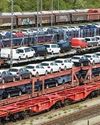
Fuel Price Hike, Supply Chain Disruption Hurt Festive Sales
Supply chain disruptions and fuel price hikes have hurt festive sales in a big way as most auto majors posted decline in sales in October.
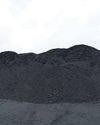
Seaborne coking coal offers remain range-bound
Seaborne coking coal offers moved in a narrow range in October amid global supply tightness and healthy spot demand.

Global crude steel output down 8% in September
China manufactured 74 mt in September, fall of 21% y-o-y while India’s production went up by 7% to 10 mt.
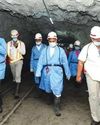
MOIL embarks on expansion projects
“Even though our country is blessed with manganese ore reserves, we import 50% of the domestic requirement. We have to lower our import dependence and save precious foreign exchange.” Ram Chandra Prasad Singh, Steel Minister

Iron ore handled by major ports down 17% in H1
The 12 major Indian ports handled 27 mt of iron-ore during H1 of 2021, down by 17% from 33 mt recorded for the corresponding period of previous year.
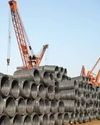
Shrinking China output to boost India exports
“In the third quarter of 2021, the company actively responded to the pressure from external policies, such as production curtailment and dual control system on energy consumption and intensity, as well as coal resource shortage and surging prices.” Baoshan Iron and Steel Co Ltd

Indian Railways' iron-ore handling up 25% in H1
Indian Railways in April-September of 2021 (H1) transported 84 mt of iron ore, up by 25% over 67 mt during April-September 2020.
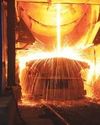
September crude steel production up 7.2% y-o-y
India’s crude steel production in September 2021 grew 7.2 percent to 9.547 million tons (mt) over September 2020 but was down by 3.2 percent from August 2021 output, provisional steel ministry data showed.

“Five enablers: way forward to sustainable cleaner steel”
Right and scalable technology, appropriate policy guidance by government, access to finance to fund transition, willingness of customers to pay for cleaner products and infrastructure for use of new technologies are the need of the hour for the sustainable and cleaner steel industry, according to Madhulika Sharma, Chief Corporate Sustainability, Tata Steel.